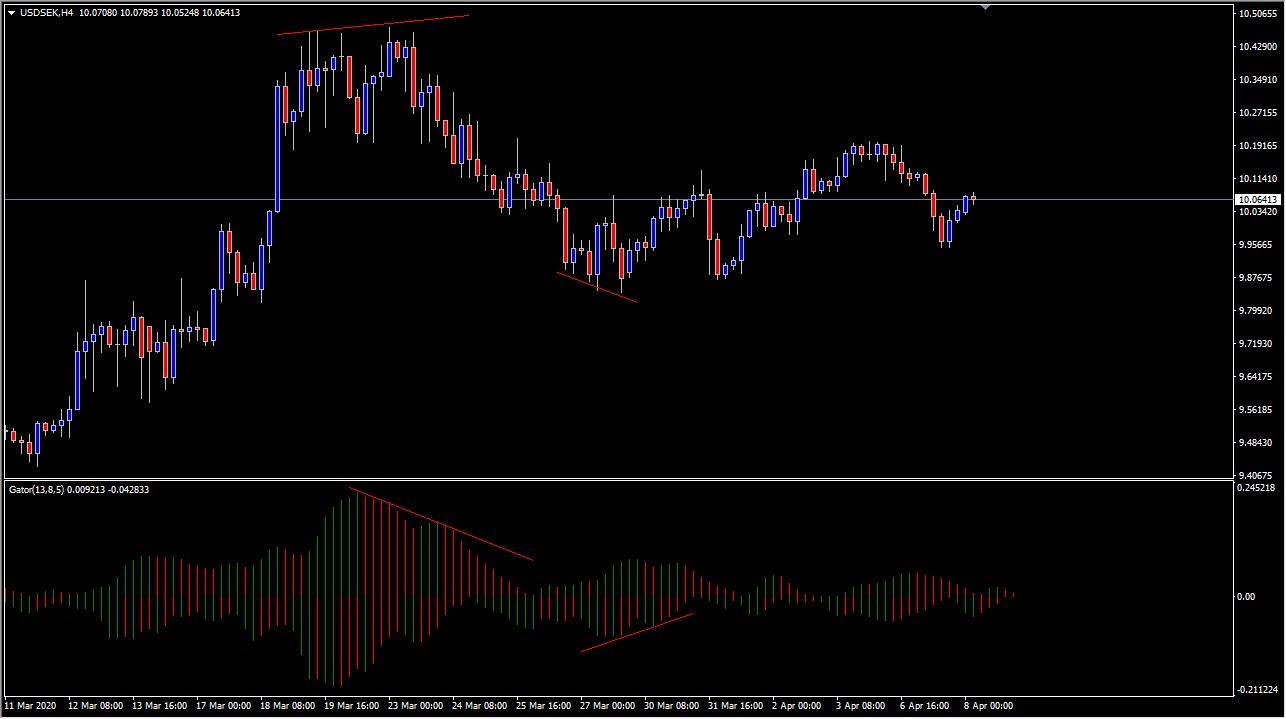Further Thoughts on the Gator Oscillator
The Bill Williams Gator Oscillator is a useful indicator, but it's essentially the same thing as the Alligator Indicator. In other words, it’s basically just using three moving averages in order to determine trends. Granted, they are smoothed moving averages, and therefore they are also susceptible to the same type of whipsaw trading situations that any moving average system will suffer. However, the oscillator gives the trader a much clearer picture of what’s going on instead of having to try to understand the slope of the moving average, the spread of the moving averages, etc. It's a handy way to discern the information. This oscillator is a bit different from many other oscillators, as it's a dual oscillator.
You use it for divergence, although that isn’t necessarily as common with this oscillator as with the Moving Average Convergence Divergence indicator, the Relative Strength Index, or many other ones. That being said, you should keep in mind that when looking for divergence in this oscillator, you need to realize that you are looking at two oscillators. The top half of it can be looked for bearish divergence, while the bottom half can be used to try to find bullish divergence.
Remember, divergence is simply a difference between momentum and price, meaning that if the price is rising but the momentum is slowing, the momentum and the price action are diverging. This is normally a sign that the market is ready to rollover, as there isn’t a lot of underlying momentum or conviction.
Alternatively, if the price is falling but the momentum is starting to go more positive, that typically means that you are going to see a bullish move sooner or later.
Take a look at the chart underneath to see a couple of examples of divergence.

Bill Williams seemed to be focusing on three specific smoothing moving averages for almost everything he did. Because of this, it probably isn't necessary to use this indicator with a bunch of other ones that he has created, because essentially, they are going to tell you the same thing.
That being said, obviously they have a certain amount of expectancy popularity as they are included with the Metatrader platform. All things being equal, the Alligator series is a set of indicators that can be useful if you understand how they are printed. At the end of the day, everything is based upon moving averages, which over the longer term work really well with trends, but a lot of traders have trouble trusting just moving averages. It’s almost impossible to trade with just moving averages, as most people will add some other indicators such as a different oscillator or Fibonacci retracement levels, or something else.
Keep in mind:
- Moving averages are lagging indicators, and therefore have a bit of a delay.
- 5, 8, and 13 are all used, albeit smoothed versions.
- The moving averages are all Fibonacci numbers, not that you can read too much into them.
- The indicator itself should not be used alone. You should use other setups in congruence with the trend information that the Gator Oscillator is telling you.
- It is essential to have an understanding of what the color combination of bars in the oscillator mean, as each variety has a different message.
Going forward, it’s crucial that you get used to reading the indicator so starting out on a demo account is probably paramount at this point. By understanding the overall attitude of the market, meaning whether or not it is trending, you can start to employ the right strategy.
In a sense, the Gator Oscillator isn’t so much a strategy as it is an indicator that can tell you which type of strategy you should be employing into the market. For example, if the alligator is sleeping, this means that there isn’t much in the way of a trend, and therefore you may like to start trading a range bound system until the alligator awakens. Obviously, the exact opposite can be true as well.
One thing that is very useful with this indicator is that when the alligator enters the sated phase, it might be time to get out of the market. At the very least, it may be time to start moving your stop loss closer to the current price, as the momentum is starting to slow down. That in and of itself is a very useful feature of this indicator, and it can keep you in more profits if you get out before the trouble starts.
Obviously, not all indicators are going to be perfect but this one is very useful because it can give you an idea of the trend without cluttering up the charts with a bunch of moving averages, although you can clearly use the Alligator Indicator right along with it, even though both indicators will essentially tell you the same thing, but in different ways. The indicator has been tested for several decades, therefore, it has a strong track record of use by professional traders.